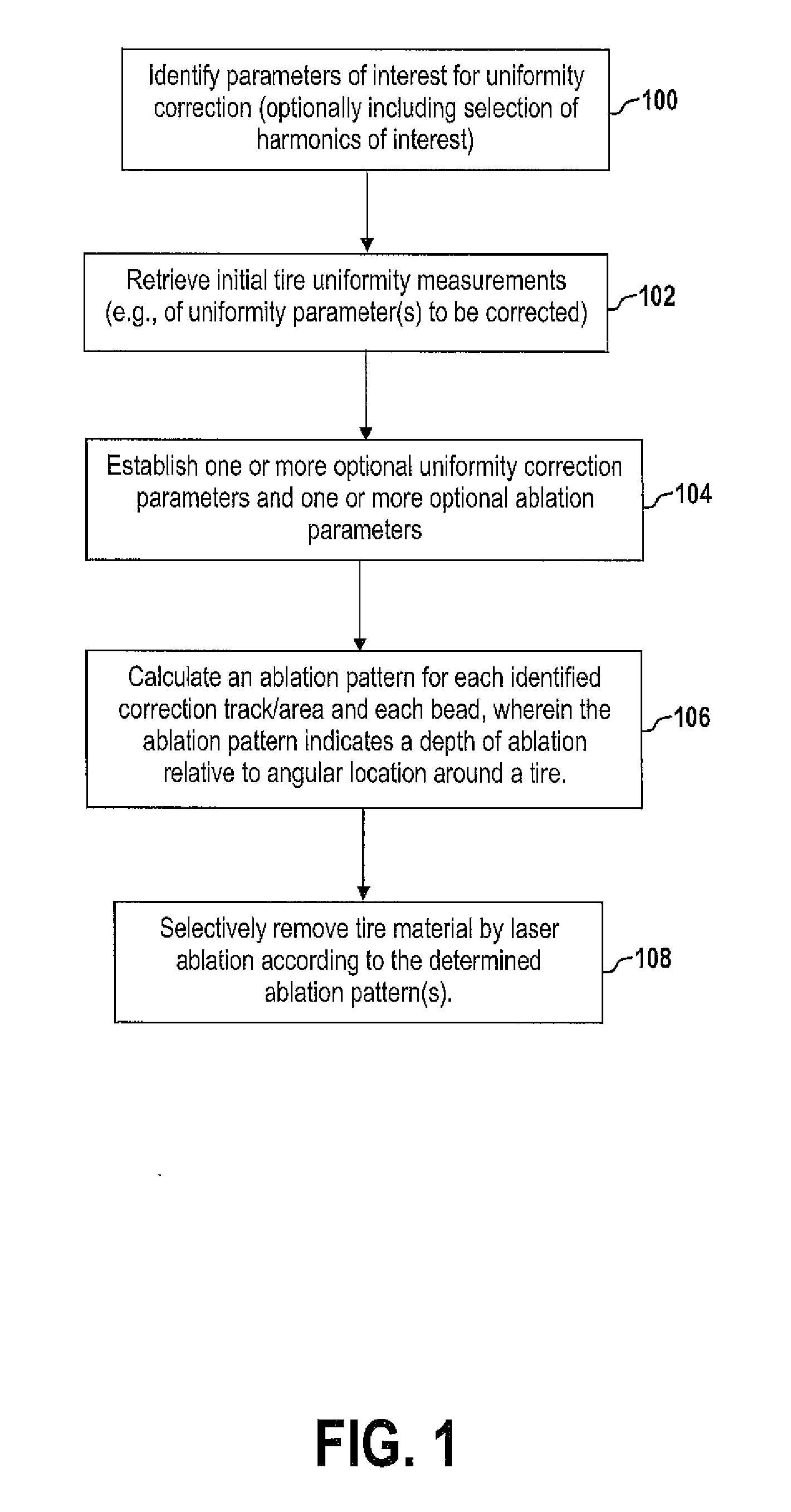Uniformity correction by ablation at different track locations along a tire bead
a technology of tire bead and ablation, which is applied in the direction of program control, instrumentation, static/dynamic balance measurement, etc., can solve the problems of tire non-uniformities, tire non-uniformities are important, and the non-uniformities present in the tire structure produce periodic-varying forces
- Summary
- Abstract
- Description
- Claims
- Application Information
AI Technical Summary
Problems solved by technology
Method used
Image
Examples
example
[0096]To better appreciate aspects of the above-described system and method of uniformity correction by bead ablation, an example of multi-harmonic, multi-parameter correction is provided. In the following discussion, as well as the exemplary data shown in FIGS. 13-21, results are shown that compare initial uniformity parameters to corrected ones after the implementation of determined ablation patterns on first and second tire bead locations. The results below provide simulated data (i.e., test results for hypothetical tires), but exemplify the types of improvements in uniformity achieved from applying the subject analysis to actual manufactured tires. The same type of input data available from the following example would be available for actual manufactured tires, and the same ablation pattern determination techniques would be employed.
[0097]Consider a hypothetical test tire having non-uniformity contributions from radial force variation (VR) and lateral force variation (VL). It is...
PUM
| Property | Measurement | Unit |
|---|---|---|
| harmonic phase | aaaaa | aaaaa |
| speed | aaaaa | aaaaa |
| rotational speed | aaaaa | aaaaa |
Abstract
Description
Claims
Application Information
 Login to View More
Login to View More - R&D
- Intellectual Property
- Life Sciences
- Materials
- Tech Scout
- Unparalleled Data Quality
- Higher Quality Content
- 60% Fewer Hallucinations
Browse by: Latest US Patents, China's latest patents, Technical Efficacy Thesaurus, Application Domain, Technology Topic, Popular Technical Reports.
© 2025 PatSnap. All rights reserved.Legal|Privacy policy|Modern Slavery Act Transparency Statement|Sitemap|About US| Contact US: help@patsnap.com



